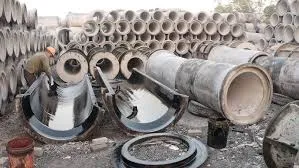- Afrikaans
- Albanian
- Amharic
- Arabic
- Armenian
- Azerbaijani
- Basque
- Belarusian
- Bengali
- Bosnian
- Bulgarian
- Catalan
- Cebuano
- China
- China (Taiwan)
- Corsican
- Croatian
- Czech
- Danish
- Dutch
- English
- Esperanto
- Estonian
- Finnish
- French
- Frisian
- Galician
- Georgian
- German
- Greek
- Gujarati
- Haitian Creole
- hausa
- hawaiian
- Hebrew
- Hindi
- Miao
- Hungarian
- Icelandic
- igbo
- Indonesian
- irish
- Italian
- Japanese
- Javanese
- Kannada
- kazakh
- Khmer
- Rwandese
- Korean
- Kurdish
- Kyrgyz
- Lao
- Latin
- Latvian
- Lithuanian
- Luxembourgish
- Macedonian
- Malgashi
- Malay
- Malayalam
- Maltese
- Maori
- Marathi
- Mongolian
- Myanmar
- Nepali
- Norwegian
- Norwegian
- Occitan
- Pashto
- Persian
- Polish
- Portuguese
- Punjabi
- Romanian
- Russian
- Samoan
- Scottish Gaelic
- Serbian
- Sesotho
- Shona
- Sindhi
- Sinhala
- Slovak
- Slovenian
- Somali
- Spanish
- Sundanese
- Swahili
- Swedish
- Tagalog
- Tajik
- Tamil
- Tatar
- Telugu
- Thai
- Turkish
- Turkmen
- Ukrainian
- Urdu
- Uighur
- Uzbek
- Vietnamese
- Welsh
- Bantu
- Yiddish
- Yoruba
- Zulu
Νοέ . 19, 2024 23:42 Back to list
cast iron modulus
Understanding the Modulus of Cast Iron Properties, Applications, and Implications
Cast iron, an iron-carbon alloy with a carbon content greater than 2%, is renowned for its excellent casting properties. One of its most critical mechanical properties is its modulus of elasticity, commonly referred to as the modulus. This property plays a significant role in determining how cast iron behaves under stress, affecting its applications and performance in various engineering contexts.
What is Modulus?
The modulus of elasticity is a fundamental material property that measures the stiffness of a material. It quantifies how much a given material will deform under a specific load. For cast iron, this modulus typically ranges from 100 to 200 GPa (gigapascals), depending on the specific formulation and microstructure of the alloy. The modulus values indicate that cast iron has a high resistance to elastic deformation, making it an excellent choice for structural components.
Types of Cast Iron and Their Modulus Values
There are several types of cast iron, each with distinct properties, including gray cast iron, ductile cast iron, white cast iron, and malleable cast iron.
1. Gray Cast Iron This is the most common type, characterized by its graphitic microstructure that enhances its machinability and castability. The modulus of elasticity for gray cast iron typically falls around 100-150 GPa. This type is widely used in the manufacturing of engine blocks, machine bases, and other structural components.
2. Ductile Cast Iron Also known as nodular cast iron, this type exhibits superior tensile strength and ductility compared to gray cast iron. Its modulus can reach up to about 170 GPa. Ductile cast iron is often utilized in applications where shock loading and higher mechanical stresses are expected, such as in automotive components and heavy machinery.
3. White Cast Iron This type contains a significant amount of cementite and has a very high hardness. Its modulus of elasticity is similar to that of gray cast iron but is often used for applications that require wear resistance, such as in the production of wear-resistant surfaces.
cast iron modulus

4. Malleable Cast Iron This iron is produced by heat treating white cast iron, resulting in improved ductility. The modulus of elasticity for malleable cast iron is typically around 120-180 GPa, making it useful for producing complex-shaped components.
Importance in Engineering Applications
The modulus of cast iron is crucial in designing components subjected to various loads. Engineers consider this property when analyzing structures to ensure safety and performance under operating conditions. A higher modulus indicates a stiffer material, which can be advantageous in applications where deflection under load must be minimized.
For instance, when designing machine elements such as gears or frames, a proper understanding of the modulus helps predict how the material will react to forces during operation. The ability to analyze these properties allows for optimal material selection, ensuring that the components can bear the required loads without excessive deformation.
Influence of Microstructure on Modulus
The modulus of elasticity in cast iron can be influenced by several factors, including the cooling rate during casting, the chemical composition, and the heat treatment processes applied post-casting. The formation and distribution of graphite flakes or nodules within the iron significantly affect its mechanical properties.
For example, rapid cooling can lead to a finer microstructure, resulting in increased strength and potentially altering the modulus. Likewise, altering the carbon or silicon content during the alloy's production can yield variable modulus values.
Conclusion
As an engineering material, cast iron's modulus of elasticity plays a pivotal role in shaping its functionality and application. Its unique mechanical properties allow for diverse applications, from automotive to industrial machinery. Understanding the modulus of different cast iron types enables engineers to select the appropriate material for specific applications, ensuring reliability and performance in demanding environments. With ongoing advancements in material science, further improvements in cast iron properties may lead to even more innovative applications in the future.
-
Custom Furniture Hardware Durable & Affordable Solutions Shop Now
NewsJun.01,2025
-
SRC Concrete Pipe Bottom Ring Durable & Customizable Solutions
NewsJun.01,2025
-
Machine Base Casting Solutions Custom & ODM Precision Castings
NewsMay.31,2025
-
Custom Cast Steel Pipe Mould Pallets Heavy-Duty & Custom Solutions
NewsMay.31,2025
-
Cast Silicon Aluminum Alloy Heat Exchanger Suppliers & Exporters
NewsMay.31,2025
-
Precision Die Casting Services Custom & Machining Parts Supplier
NewsMay.31,2025


